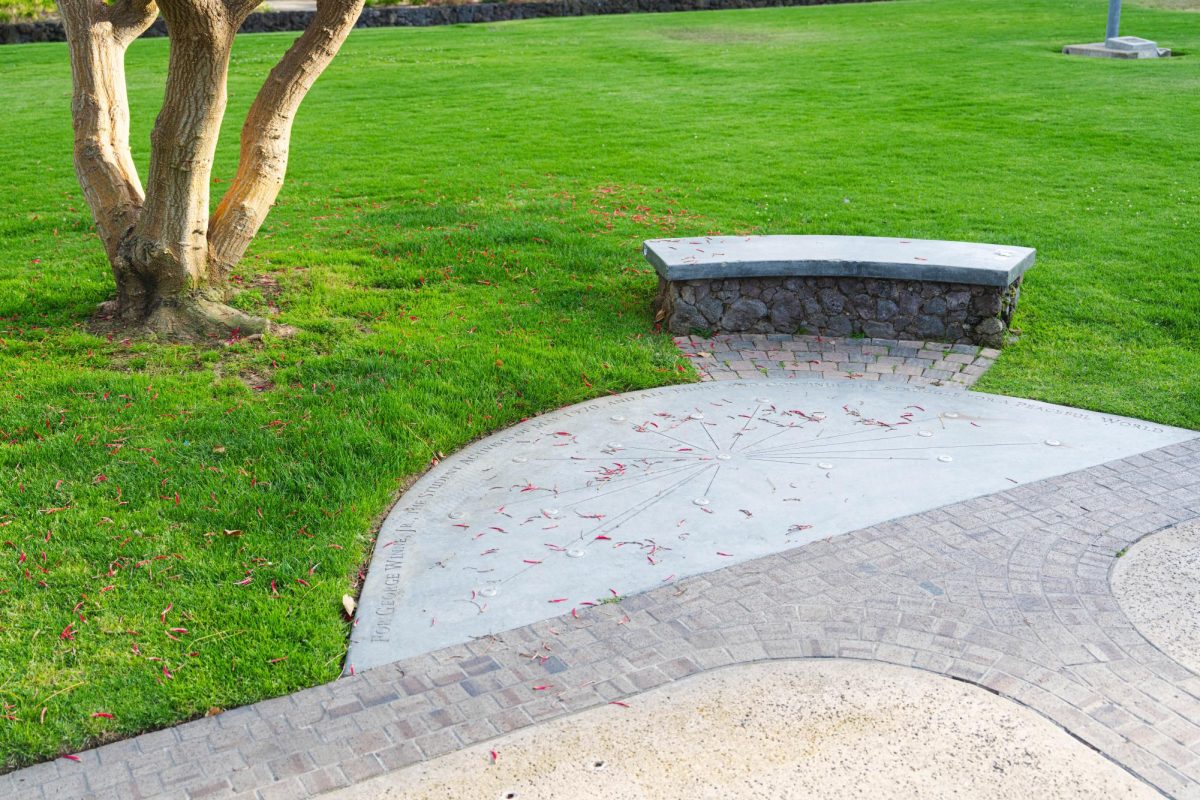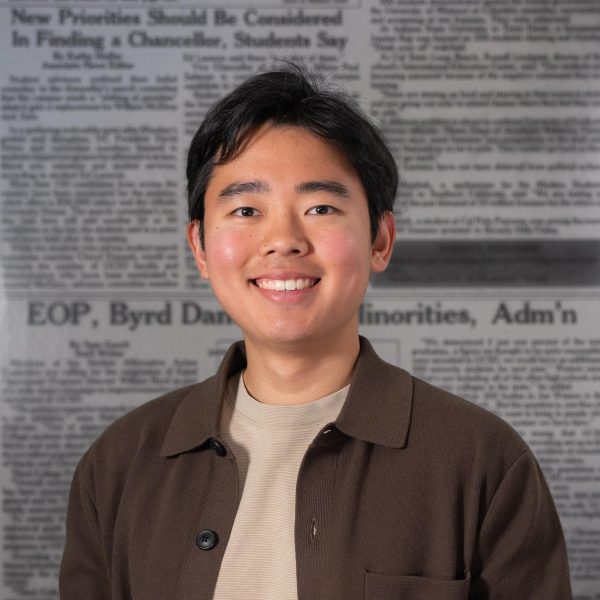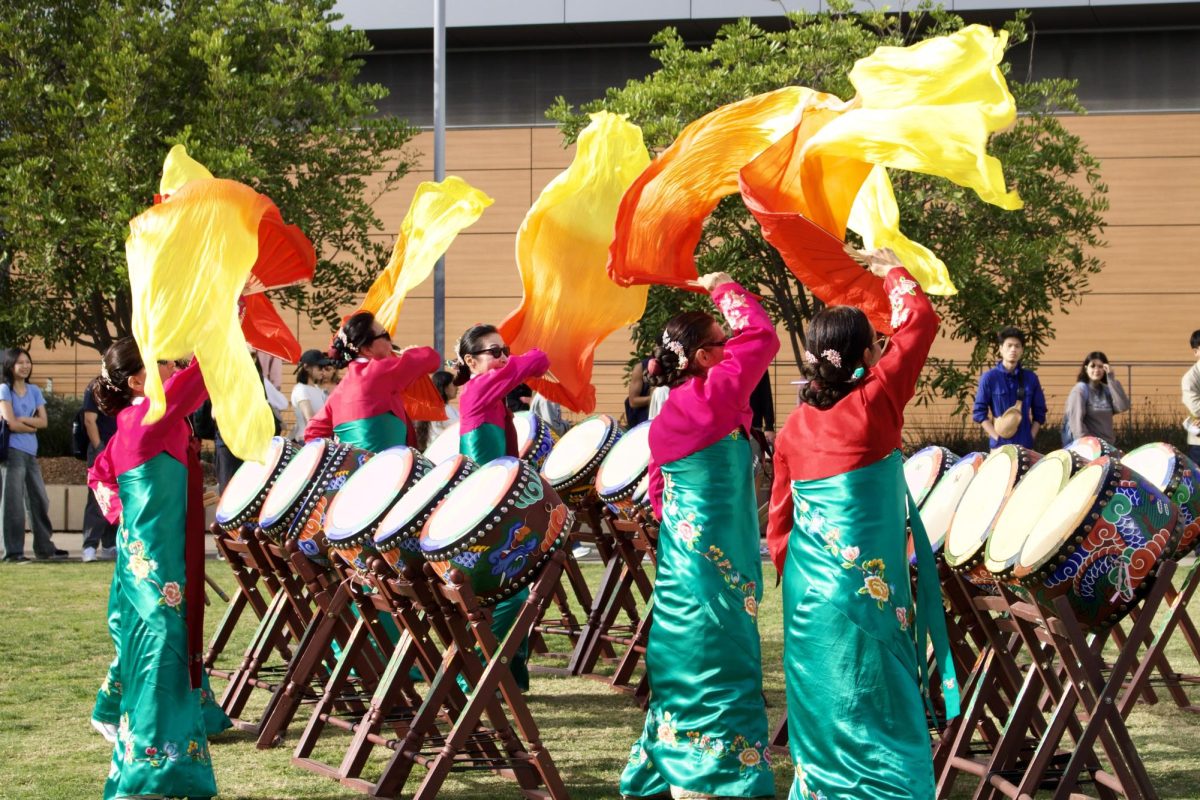It was just past 4 p.m. on May 10, 1970, when George Winne Jr., a 23-year-old UC San Diego fourth-year, strode out into Revelle Plaza.
Ten days earlier, then-President Richard Nixon had drastically expanded the Vietnam War by sending American troops into Cambodia. Four days after that, National Guard troops opened fire on a crowd of anti-war protesters at Kent State University in Ohio, killing four students. Massive anti-war demonstrations were taking over Revelle Plaza every week.
However, on Sunday, May 10, in this tense atmosphere, Winne walked alone. He held a sign that read: “In the name of God, End this war.”
Winne stood at the northeastern corner of the plaza, in front of what is now Galbraith Hall, and began to douse himself with gasoline. Then, he lit a match.
The flames instantly swallowed him. Winne, burning, ran across Revelle Plaza screaming, “Stop the war! Stop the war!” Several horrified bystanders tried to knock Winne down and beat out the flames, but it was no use. By the time the flames were out, Winne had sustained third- and fourth-degree burns across 95% of his body. He spent 10 hours at Scripps Memorial Hospital before dying that night at about 2 a.m.
At the hospital in his last moments, Winne told his parents to write a letter to Nixon, telling them, “The world is in such a terrible mess, and Nixon is part of it.” He also told a friend, “Get rid of guns. Guns just mean more guns.”
The details of Winne’s act itself are only half the story. Who was this solitary, intense young man? Of all the ways to protest an injustice, what made him choose this way? Few who encounter Winne’s story feel like they would make the same choice, while many others struggle to understand it. Perhaps the mystery has only increased the story’s staying power.
Winne was an unlikely anti-war crusader. He came from a military family; his father George Winne Sr. was a naval officer, and Winne himself — who grew up in La Jolla — had actually applied to the United States Naval Academy. He was rejected because he was nearsighted in one eye, and instead, he joined the ROTC at the Colorado School of Mines before transferring to UCSD.
Once he arrived at UCSD, Winne’s outlook began to change. Friends noticed him becoming increasingly disturbed by the war in Vietnam. He stopped talking to his parents entirely — his mother had not heard from him for several months leading up to his death. The war, and how to end it, had become an obsessive focus for Winne. He was just weeks away from graduating when he died, and would have become eligible to be drafted and sent to Vietnam once he lost his student status.
And yet, despite the countless anti-war protests and sit-ins taking place on campus in the Spring 1970, Winne never participated in any of them. His first and last act of protest took place that Sunday in May, alone in Revelle Plaza.
However, though Winne was alone that day, he was not alone in the choice he made. Numerous people self-immolated — deliberately killing themselves by setting themselves on fire — to protest the Vietnam War. Between 1963 and 1965, several Buddhist monks in Vietnam burned to death to voice their opposition to the war — and anti-war activists in the U.S. followed their example. In March 1965, Alice Herz, an 82-year-old German-Jewish immigrant who had narrowly escaped the Holocaust, self-immolated on a street in Detroit to demand that then-President Lyndon B. Johnson end the war in Vietnam. In November that same year, 31-year-old peace activist Norman Morrison burned himself to death in front of the office of Robert McNamara, then-secretary of defense and a main architect of the war. One week later, 22-year-old Roger Allen LaPorte did the same in front of the United Nations headquarters in New York.
The Vietnam War era was not the only time in which people used self-immolation to make a statement. Many readers will undoubtedly remember February of last year when Aaron Bushnell, a 25-year-old airman in the U.S. Air Force, burned himself to death in front of the Israeli embassy in Washington D.C. to protest Israel’s genocide against the Palestinian people. Bushnell, who set himself on fire wearing his Air Force combat fatigues, shouted “Free Palestine” as the flames consumed him. A Secret Service agent arrived on the scene and, rather absurdly, stood there pointing his pistol while Bushnell sat and burned.
Bushnell’s self-immolation polarized public opinion in the U.S. Some praised Bushnell’s act as drastic but justified, while others condemned the “glorification” of suicide for any reason. Officials declined to engage with the human side of the Bushnell story at all; when asked about the incident, then-Pentagon Press Secretary Maj. Gen. Patrick Ryder merely reaffirmed America’s support for Israel. Sen. Bernie Sanders said of Bushnell’s death, “It’s obviously a terrible tragedy, but I think it speaks to the depths of despair that so many people are feeling now about the horrific humanitarian disaster taking place in Gaza, and I share those deep concerns.”
A similar debate took place in the wake of Winne’s self-immolation at UCSD and has sputtered on ever since. Was Winne’s action justified? Was it the act of a madman, or was it a symptom of the desperate times in which it took place?
This now-familiar debate began almost as soon as Winne died. The next day, May 11, 1970, students and faculty held a memorial service for Winne in Revelle Plaza — Herbert Marcuse, famed philosopher and UCSD professor, delivered a eulogy. Issues of The UCSD Guardian featured many more such eulogies, or, conversely, denunciations of Winne’s actions. The debate continued to take place across The Guardian’s pages for decades afterward. Sometimes, the pieces praised Winne as a young man who sacrificed everything for his beliefs; sometimes, they condemned both his act and those who applauded it.
On the fourth anniversary of Winne’s death, then-Editor-in-Chief of The Guardian David Buchbiner wrote:
“The collective acts of masses may ultimately cause change to occur, yet it is in the actions of individuals where the moral conscience to cause change is initially raised. It is this power of the individual to stir conscience which we should recall and honor on this day. May we be as brave.”
On the 20th anniversary, one student penned an op-ed commemorating Winne. Another wrote a letter to the editor titled “Winne Was Not a Hero,” which declared, “[To some,] Winne is a hero of conviction. To me, he’s dead.” Another letter was more ambiguous, eerily similar to Sanders’ statement on Bushnell’s 2024 self-immolation.
“I don’t know if Winne should be termed a ‘hero’ because he sacrificed his life in protest of the war,” the letter read. “I do, however, think that we should reflect upon the circumstances surrounding his death. The tragic alternative that Winne sought is a testimony to the desperation many feel toward the absurdity of war and the degeneration of human morality.”
Even half a century later, Winne’s act has not been forgotten. In 2014, students and faculty from Thurgood Marshall College’s Dimensions of Culture program teamed up to create a memorial for Winne in Revelle Plaza, near where he lit himself on fire. The May 1970 Peace Memorial consists of a small tree, a bench, and a concrete half circle bearing the inscription: “For George Winne Jr., the student activists of May 1970, and all those who continue to struggle for a peaceful world.”
This past May 10 marks 55 years since Winne died. Violent conflicts — in Palestine, in Ukraine, and now in Kashmir — continue to rage across the world. And in a time when students have once again taken a leading role in anti-war activism, Winne’s act — irrespective of what one thinks of it — carries an undeniable resonance. Madman or idealist, the ghost of George Winne still haunts the place where he took his final stand.
The May 1970 Peace Memorial is dedicated not just to Winne but to all those who continue to struggle for a peaceful world. Perhaps they are struggling for a world in which an act like Winne’s would not take place — where that kind of desperation is unthinkable, because the lack of humanity that breeds it has been extinguished for good. But if present experience shows us anything, such a world has not yet come.










